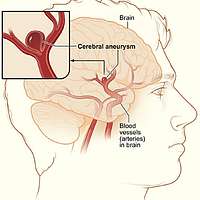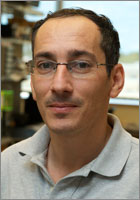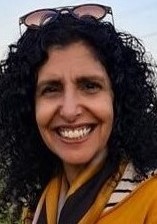
About the Project
Engineering Interfacial Fluid Trapping for Localized Treatment of Brain Aneurysms
Intracranial Aneurysms are blood filled saccular lesions located on cerebral arteries. These life-threating lesions are present in about 2-6% of the population and as neuro-imaging procedures are being used more frequently, more and more aneurysms are being incidentally detected. Luckily, most aneurysms remain silent and only 0.2% of intracranial aneurysms rupture, resulting in subarachnoid hemorrhage and death. Most of the treatment methods for cerebral aneurysm are catheter based and include coiling and stenting or surgical clipping. Both methods help in treating the condition however they involve high risks of complications and do not apply to all aneurysms (e.g., irregular shaped aneurysms, large neck aneurysms). Altogether, current preventive aneurysm repair strategies carry a risk of approx. 6% to 10% for poor neurological outcome.
Injectable biomaterials are one promising technology that has arisen over the past decade for tissue repair and localized therapeutics. For treatment of aneurysms, injectable biomaterials can be optimally designed to enable endothelialization and healing of the main vessel. Moreover, they offer 100% filling density. However, one of the key hurdles is that injectable biomaterials currently require a completely occlusive balloon protection to allow localized administration at the aneurysm site, which are complex to operate, may result in mechanical damage to the vessel and are associated with a higher rate of intraoperative aneurysm rupture.
Therefore, we aim to develop a new strategy for confined treatment at the aneurysm site using fluid mechanics-based method. Our main goal is to use immiscible fluids to isolate brain aneurysms for localized intravascular treatments and embolization.

Figure 1: An aneurysm located on one of the brain blood vessels.

Figure 2: Treatment methods for cerebral aneurysms: (A) Surgical clipping and (B) stent-assisted endovascular coiling.
Project Period: 2021-2026
ERC Team

Principle Investigator: Prof. Netanel Korin

Lab Manager: Daphna Marbach

Research Associate: Dr. Maria Khoury

Research Associate: Dr. Iris Bonshtein

Tirosh Mekler (PhD student)

Dmitry Korneyev (Undergradute)
Previous Members:
Dr. Mark Epshtein
Dr. Rami Fishler
Dr. Saurabh Bhardwaj
